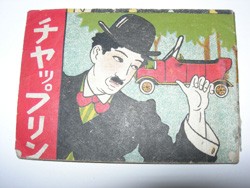Columbia’s Starr Library Acquires Extensive East Asian Film History Collection
NEW YORK, September 19, 2006 Columbia University’s C. V. Starr East Asian Library is acquiring an extraordinary archive of materials chronicling the history of Japanese and East Asian film, collected by the renowned documentary film maker and film historian Makino Mamoru.

The collection contains material dating back to the earliest moving pictures in Japan and the start of domestic film production during the Meiji period (1868–1912), and continues to the present. It includes a wealth of rare print materials including full runs of trade press and fan periodicals, flyers, posters, and other publicity materials. Of particular interest to scholars are a number of early original scenarios with directors’ shooting notes as well as handbooks for the live benshi narrators of Japanese silent films.
“Under Columbia’s care, the Makino Mamoru archive will no doubt become the springboard for entirely new ways of understanding the history of Japanese cinema and twentieth century culture,” said James Schamus, professor of film studies at Columbia’s School of the Arts and an Academy Award-nominated screenwriter and producer. “For film scholars and movie enthusiasts, the bringing to light of this archive is something akin to the discovery of a new galaxy.”
The collection is particularly strong in materials related to the work of ground-breaking Japanese directors such as Kurosawa, Mizuguchi, Ozu, Inogaki, and Kinugawa, as well as that of more recent directors such as Teshigahara, Oshima, Shinoda, Iwamura, and others. In recent years, Mr. Makino has expanded the scope of his collecting to add significant materials on Chinese, Taiwanese, Hong Kong, and Korean cinema. These include film periodicals from Shanghai, Beijing, and Seoul published in the 1930s and 1940s, some of which are not available elsewhere in North America.
“This collection will make the Starr East Asian Library an international center for East Asian film studies,” said Amy Heinrich, the Library’s Director. “It is truly an exciting extension of our work in collecting and preserving primary and secondary resources for the study of East Asian cultural history.” The Makino collection as a whole contains approximately 80,000 items and will be available for use by scholars and researchers to use as processing proceeds.
“The Makino East Asian Film Archive is an extraordinary resource and it is an honor for Columbia to make the collection available for education and scholarship,” said James Neal, Vice President for Information Services and University Librarian. “We welcome this opportunity to advance Mr. Makino’s goals for wider availability and use of the collection.”

Columbia was the first university in the United States to offer courses in film study, in 1916, taught by the seminal director D. W. Griffith. An M.F.A. program was established in 1966 to focus on film history, theory, and criticism, and has featured such influential writers and directors as Milos Forman, Samson Raphelson, Andrew Sarris, Annette Insdorf, and Professor Schamus, whose collaboration with the director Ang Lee has produced such films as Brokeback Mountain and Crouching Tiger, Hidden Dragon.
Since 1902, the University has also demonstrated leadership in the field of East Asian studies, with the creation of one of the first departments in the country, and, in the postwar period, of the first core curriculum in East Asian studies, thanks to the work of professors such as Wm. Theodore de Bary and Donald Keene. Today there are more than 70 Columbia faculty members working in this area, and more than 20 percent of all undergraduates at Columbia and Barnard enroll in at least one course about East Asia. Students and scholars from all over the New York metropolitan area and the world have come to rely on the C. V. Starr East Asian Library for their research, and in the last decade circulation of books at the Library has increased by 135 percent.
Columbia University Libraries is one of the top ten academic library systems in the nation, with 9.2 million volumes, over 65,650 serials, as well as extensive collections of electronic resources, manuscripts, rare books, microforms, and other nonprint formats. The collections and services are organized into 25 libraries, supporting specific academic or professional disciplines. Columbia Libraries employs more than 400 professional and support staff to assist faculty, students, and researchers in their academic endeavors. The Libraries’ website at http://www.columbia.edu/cu/lweb/ is a gateway to its print and electronic collections and to its services.
The C. V. Starr East Asian Library is one of the major collections for the study of East Asia in the United States, with over 805,000 volumes of Chinese, Japanese, Korean, Tibetan, and Western language materials, as well as some holdings in Mongol and Manchu, and over 6,000 periodical titles. The collection, established in 1902, is particularly strong in Chinese history, literature, and social sciences; Japanese literature, history, and religion, particularly Buddhism; and Korean history. The Library’s website is located at
http://www.columbia.edu/cu/lweb/indiv/eastasian/.